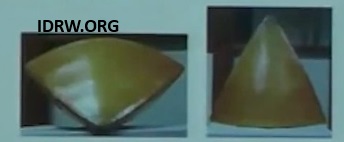SOURCE: AFI


The Council of Scientific and Industrial Research-National Aerospace Laboratories (CSIR-NAL) has successfully completed the development of the advanced Frequency Selective Surface (FSS) radome, a critical component for India’s fifth-generation Advanced Medium Combat Aircraft (AMCA) program. This cutting-edge radome technology plays a pivotal role in enhancing the stealth capabilities of the AMCA, ensuring it can operate effectively in complex combat scenarios.
The FSS-radome is designed to exhibit exceptional transmission characteristics in the X-band frequency range while providing sharp roll-off characteristics outside the X-band, covering a frequency spectrum from 2 to 18 GHz. These features are crucial for maintaining the aircraft’s low radar cross-section (RCS), thereby enhancing its survivability against enemy radar systems.
Key Features and Innovations:
Proof-of-Concept Fabrication:
As part of the development process, a proof-of-concept has been fabricated, including an FSS-embedded multilayered planar laminate measuring 660 mm x 520 mm. Additionally, an asymmetric doubly curved radome, with a height of 500 mm from the nose tip, has been tested. These prototypes have undergone rigorous testing to validate their performance and ensure they meet the stringent requirements of modern combat aircraft.
Enhanced Transmission Characteristics:
The FSS-radome demonstrates superior transmission capabilities in the X-band, which is essential for the effective operation of radar systems onboard the AMCA. This ensures that the aircraft can communicate and gather intelligence without compromising its stealth profile.
Significant RCS Reduction:
One of the most notable achievements of the FSS-radome development is the significant reduction in out-of-band RCS. The FSS design allows for an impressive reduction of approximately 10 dBsm compared to traditional monolithic radomes of the same dimensions. This reduction is critical in minimizing the aircraft’s detectability, making it harder for adversaries to track and target the AMCA.
The development of the FSS-radome marks a significant milestone in India’s pursuit of an indigenous fifth-generation fighter jet. The AMCA program is crucial for enhancing the Indian Air Force’s capabilities, providing advanced air superiority, and incorporating stealth technologies that rival global standards.
The completion of the FSS-radome development by CSIR-NAL is a landmark achievement in India’s defense technology landscape, particularly for the AMCA fighter jet program. By leveraging advanced materials and innovative design, the FSS-radome enhances the stealth and operational capabilities of the AMCA, ensuring it meets the challenges of modern aerial warfare. As India continues to advance its indigenous defense capabilities, developments like the FSS-radome represent a significant step towards achieving self-reliance and strengthening national security.